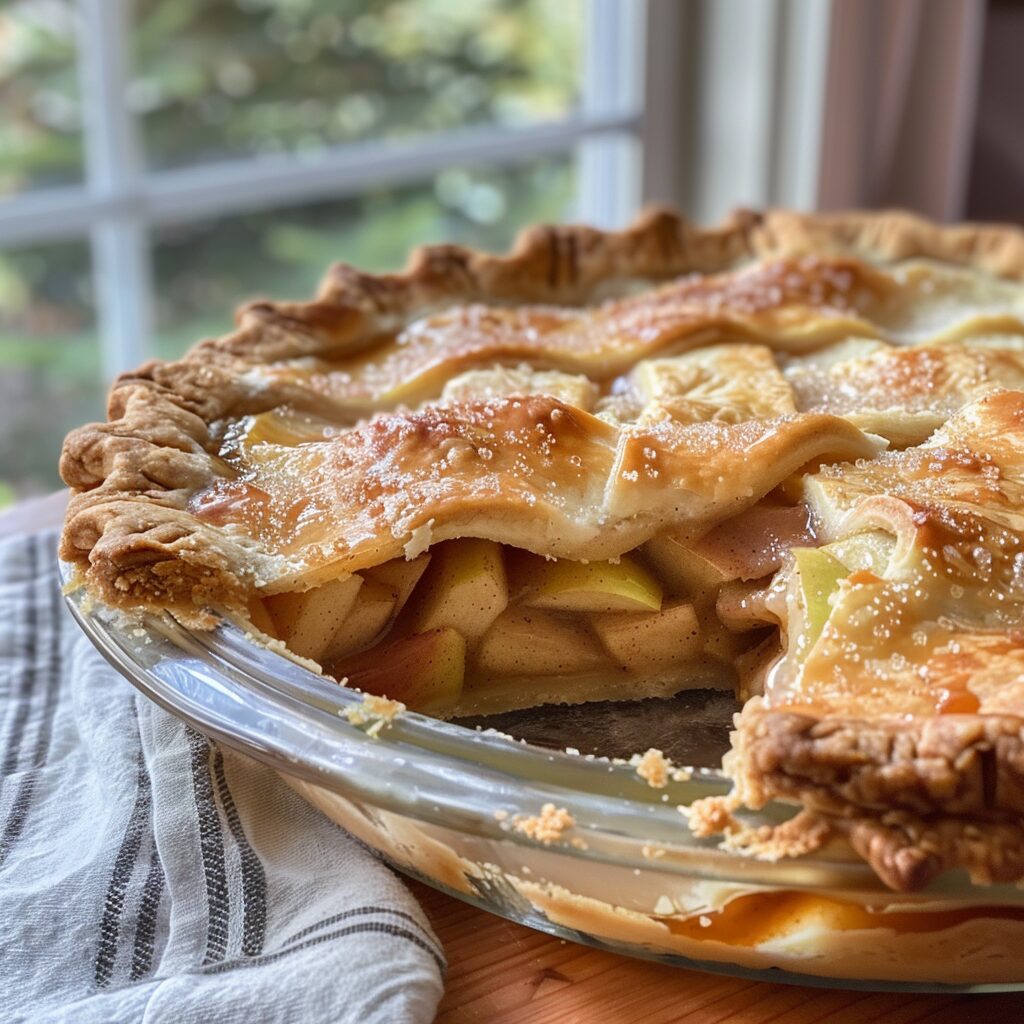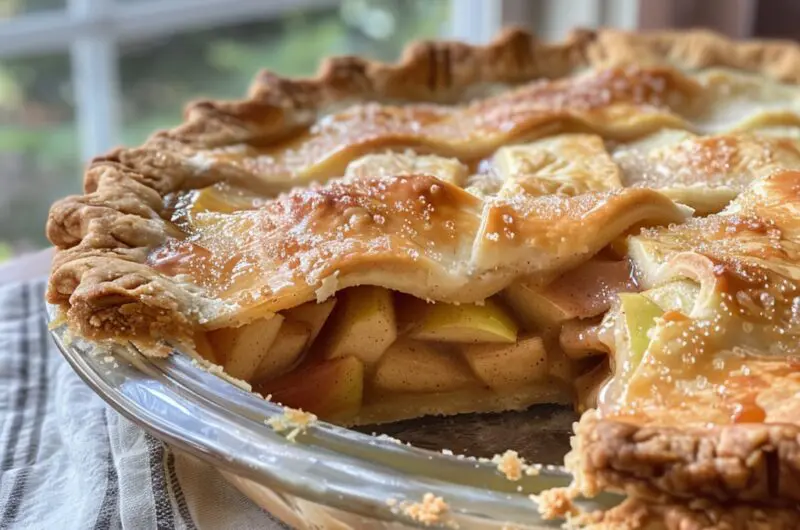When it comes to baking the perfect pie, Grandmas seem to have a secret weapon up their flour-dusted sleeves. Whether it’s a classic apple pie or a decadent pecan pie, there’s often one key ingredient that sets Grandma’s pies apart from the rest. So what is this magical ingredient that Grandmas swear by? The answer may surprise you – it’s a simple blend of white and brown sugar.
The Perfect Balance of Sweetness
While white sugar is a staple in most pie recipes, many Grandmas insist on adding a generous scoop of brown sugar to their fillings. The molasses in the brown sugar adds a depth of flavor and a hint of warmth that complements the fruit or nuts in the pie. It’s the perfect balance of sweetness that keeps people coming back for slice after slice.
One classic example of this sugar blend in action is Grandma Ople’s famous apple pie recipe. This beloved recipe has been passed down through generations and consistently ranks as one of the most popular pie recipes on sites like Allrecipes. The secret to its success? You guessed it – a combination of white and brown sugar in the filling.
To make Grandma Ople’s apple pie, you start by cooking a paste of butter and flour, then adding in the sugars and some water. This sweet mixture is then poured over a mound of tart Granny Smith apple slices before being sealed up in a flaky crust. As the pie bakes, the sugars caramelize and meld with the apples, creating a filling that is gooey, rich, and perfectly balanced.
Tip: For an extra indulgent twist, try stirring some of the sugar sauce directly into the apple slices before assembling the pie.
Of course, the white and brown sugar combo isn’t just limited to apple pies. Grandmas have been using this blend for generations in all sorts of pie recipes, from juicy cherry pies to creamy pumpkin pies. The key is to adjust the ratio of white to brown sugar depending on the pie filling. For example, a pecan pie may call for more brown sugar to complement the nutty flavors, while a lemon meringue pie may stick with mostly white sugar to keep the filling bright and tangy.
A Nod to Nostalgia
So why do Grandmas insist on using this specific sugar blend in their pies? Part of it may be nostalgia – many of these recipes have been passed down through the generations, with each Grandma putting her own spin on the family favorite. Using the same ingredients as the Grandmas before them is a way to honor tradition and keep those memories alive.
But there’s also a practical reason for the sugar blend. Back in the day, white sugar was often more expensive and harder to come by than brown sugar. By using a mix of the two, Grandmas could stretch their sugar supply and add a new depth of flavor to their pies at the same time. It was a win-win situation that has stood the test of time.
These days, most of us have easy access to both white and brown sugar at the grocery store. But there’s still something special about following in Grandma’s footsteps and using that same signature ingredient in our own pies. It’s a little nod to the past and a comforting reminder of all the love and care that goes into every homemade pie.
Tip: If you’re new to baking pies, start with a simple recipe like Grandma Ople’s apple pie and get comfortable with the basics before branching out to more complex flavors and techniques.
So the next time you’re whipping up a pie for a special occasion or just because, consider taking a page from Grandma’s cookbook and adding a scoop of brown sugar to your filling. That one simple ingredient may be the key to taking your pie game to the next level and creating a dessert that is worthy of being passed down to the next generation of pie lovers.
Choosing the Right Tools
Of course, even the best ingredients won’t make much of a difference if you don’t have the right tools for the job. Grandmas know that investing in quality pie-making equipment is just as important as using the right blend of sugars.
One essential tool for any pie baker is a good pie dish. Whether you prefer glass, ceramic, or metal, look for a dish that is sturdy, conducts heat evenly, and is the right size for your favorite recipes. Glass pie dishes are a popular choice because they allow you to check the doneness of the crust, while ceramic dishes are great for conducting heat and can be used for both sweet and savory pies.
Another must-have tool is a good rolling pin. Whether you prefer a traditional wooden pin or a modern silicone version, look for a pin that is comfortable to hold and easy to maneuver. Some bakers swear by using a French-style rolling pin for pie crusts, as the tapered shape makes it easier to control the thickness of the dough.
Tip: If you’re struggling with rolling out your pie crust, try chilling the dough in the fridge for at least 30 minutes before rolling. This will help keep the dough from sticking and make it easier to work with.
Finally, don’t forget the importance of a good pie server. A sharp, sturdy server will make it easy to cut and serve perfect slices of pie without damaging the crust or filling. Look for a server with a comfortable handle and a thin, flexible blade that can glide easily through even the most delicate of pies.
With the right tools and ingredients, anyone can channel their inner Grandma and create a pie that is sure to impress. So dust off that old family recipe, grab your favorite pie dish, and get ready to bake up a storm. Your taste buds (and your lucky guests) will thank you.
In the end, the secret to a great pie isn’t just about the ingredients or the tools – it’s about the love and care that goes into every step of the process. From rolling out the dough to sprinkling on that final dusting of sugar, every gesture is an opportunity to channel the wisdom and warmth of the Grandmas who came before us. So the next time you slice into a homemade pie, take a moment to savor not just the flavors, but the generations of love and tradition baked into every bite.
Grandma’s Brown Sugar Apple Pie
Course: DessertCuisine: American8
servings30
minutes1
hour450
kcalDiscover the secret to Grandma’s irresistible apple pie – a blend of white and brown sugar that takes this classic dessert to new heights!
Ingredients
2 1/2 pounds Granny Smith apples (about 6-7 medium apples), peeled, cored, and sliced 1/4-inch thick
1/2 cup granulated white sugar
1/2 cup packed brown sugar
1 tablespoon all-purpose flour
1 teaspoon ground cinnamon
1/4 teaspoon ground nutmeg
1/4 teaspoon salt
2 tablespoons unsalted butter, cut into small pieces
1 large egg, beaten (for egg wash)
Directions
- Preheat your oven to 425°F (220°C). In a large bowl, mix together the white sugar, brown sugar, flour, cinnamon, nutmeg, and salt until well combined. Add the sliced apples to the bowl and toss them with the sugar mixture until they are evenly coated.
- Pour the apple mixture into a 9-inch deep-dish pie plate lined with unbaked pie crust. Dot the top of the apples with the butter pieces. Cover the pie with a top crust, seal the edges, and flute the crust as desired. Cut slits in the top crust to allow steam to escape during baking.
- Brush the top crust with the beaten egg and sprinkle with additional white sugar, if desired. Place the pie on a baking sheet to catch any drips and bake for 45-50 minutes, or until the crust is golden brown and the filling is bubbling.
- Remove the pie from the oven and let it cool on a wire rack for at least 30 minutes before slicing and serving. This allows the filling to set up slightly, making it easier to slice and serve. Enjoy your delicious homemade apple pie, just like Grandma used to make!
Notes
- For a more decadent pie, try stirring some of the sugar mixture directly into the apple slices before assembling the pie.
- If you prefer a less sweet pie, you can reduce the amount of white and brown sugar slightly, but be sure to keep the ratio of white to brown sugar the same.
- To ensure a crispy bottom crust, place the pie on the lowest rack of your oven during baking. This will help the bottom crust to cook through and become golden brown.
Frequently Asked Questions
Q: Can I use a different type of apple in this recipe?
A: While Granny Smith apples are the traditional choice for apple pie due to their tart flavor and ability to hold their shape during baking, you can certainly experiment with other firm, tart apple varieties like Honeycrisp, Braeburn, or Pink Lady. Just be sure to avoid softer, sweeter apples like Red Delicious, as they may become too mushy during baking.
Q: Can I make this pie ahead of time?
A: Yes, you can make this apple pie up to 24 hours in advance. Simply bake the pie as directed, let it cool completely, and then store it loosely covered at room temperature until ready to serve. If you need to store the pie for longer than 24 hours, it’s best to keep it in the refrigerator and then reheat it in a 350°F (175°C) oven for about 15 minutes before serving.
Q: How do I prevent my pie crust from getting soggy?
A: To prevent a soggy bottom crust, be sure to place your pie on the lowest rack of your oven during baking. This will help the bottom crust to cook through and become crispy. You can also try brushing the bottom crust with a beaten egg white before adding the filling, as this can help to create a barrier between the crust and the moist filling.
Q: Can I freeze this apple pie?
A: Yes, you can freeze this apple pie either before or after baking. To freeze an unbaked pie, assemble the pie as directed, wrap it tightly in plastic wrap and then aluminum foil, and freeze for up to 3 months. When ready to bake, unwrap the pie and bake it directly from the freezer, adding an extra 15-20 minutes to the baking time. To freeze a baked pie, let it cool completely, wrap it tightly in plastic wrap and then aluminum foil, and freeze for up to 3 months. When ready to serve, thaw the pie overnight in the refrigerator and then reheat it in a 350°F (175°C) oven for about 15 minutes.


